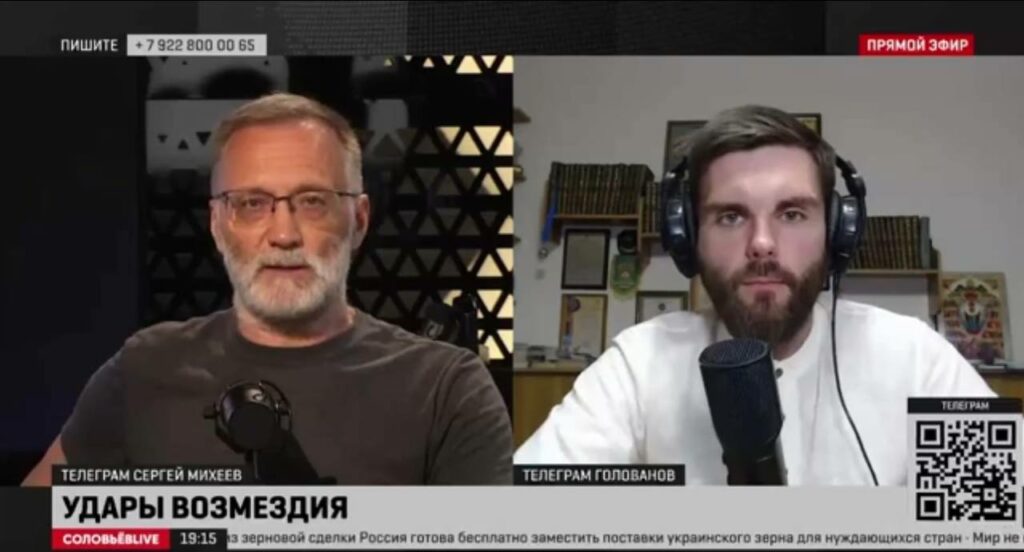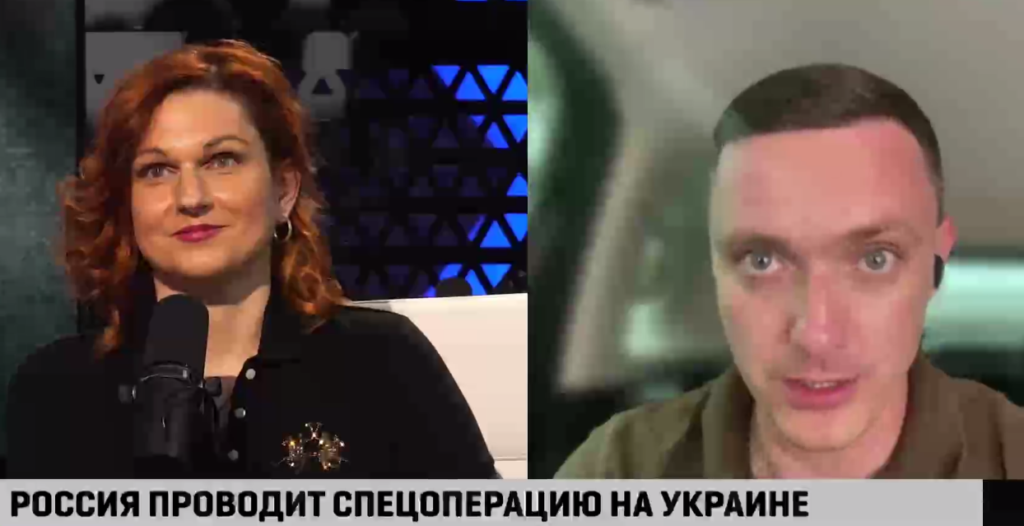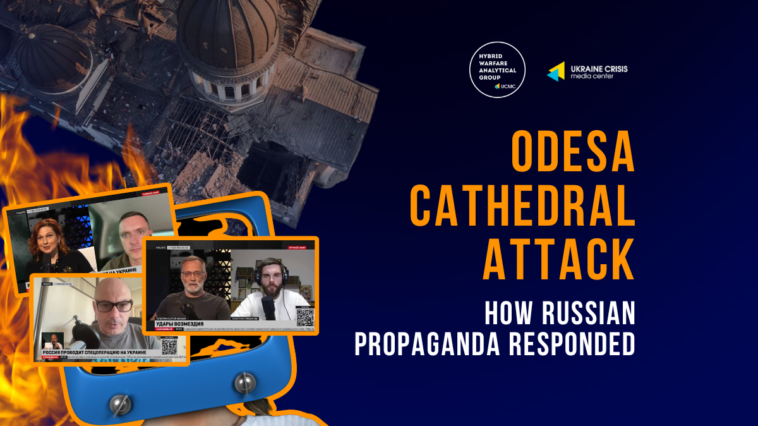The reactions of Russian propagandists to the attack on Odesa and the Transfiguration Cathedral demonstrate a concerning trend of dehumanizing the enemy, in this case, Ukraine and its people. Through their portrayal of Ukraine as the aggressor and their attempts to justify Russia’s actions, these propagandists create a narrative that justifies aggression and violence against the Ukrainian people.
One striking example of this dehumanization is their efforts to downplay the gravity of the attack and shift blame to Ukraine by spreading false information immediately after the incident. By doing so, they aim to depict Ukraine as a callous and reckless aggressor, ultimately dehumanizing and vilifying the entire country and its people.
This analysis reveals how these manipulative tactics employed by propagandists serve to further their agenda and harken back to the propaganda strategies of the Stalinist era.
Russian propagandists attempted to gain a foothold by immediately disseminating false information and controlling the narrative surrounding the attack by deploying their top state and most-followed propagandists. Olga Skabeeva, perhaps one of the most influential TV propagandists, was the first to take to the stage, posting a picture on Telegram just hours after the attack, claiming that the cathedral was destroyed by a Ukrainian missile.
“This is the state of the cathedral after a Ukrainian missile struck it.”
Olga Skabeeva, Russian Propagandist, TV host
Skabeeva sought to establish a narrative that portrayed Ukraine as the aggressor, deflecting attention away from Russia’s own actions by being the first to comment on and shape the initial perception of the event.
Following Skabeeva’s lead, Russian propagandist and Solovievlive host Sergei Mardan echoed the same narrative, blaming the destruction on Ukrainian forces and their allegedly “outdated systems” in an attempt to show the Ukrainian military leadership as careless. By focusing on the fact that they are outdated systems, it portrays the Ukrainian military as weak and ineffective.
“As is traditional, the Ukrainian armed forces fired missiles that flew in an unintended direction or malfunctioned because they had an expiration date of 20 years ago.”
Sergei Mardan, Russian Propagandist and host on SolovievLive
This tactic of shifting blame onto Ukraine and portraying them as the perpetrators of the attack was bolstered by Russia’s Ministry of Defence, which claimed that a Ukrainian guided missile fell because operators purposefully placed it in residential areas.
A closer look at Ukraine’s air defense measures, however, reveals a different picture…
It is true, Ukraine has limited resources and outdated equipment in the face of a hostile and aggressive neighbor, according to Yurii Ignat, spokesperson for Ukraine’s Air Defense Forces, on July 16. As a result, the Ukrainian official explained how Ukraine frequently has to deploy air defense systems closer to residential areas in order to protect its cities, but not inside. Unlike Russia, who erects air defense complexes on top of government buildings, in the middle of a populated city, Ukraine takes the necessary preventive measures.
This deployment of Ukrainian air defense systems is not a deliberate act of endangering civilians, as Russian propaganda suggests, but rather a strategic response to protecting their population from foreign threats with the limited systems available. Moreover, one should focus on the wording: ‘defense’ systems. Ukraine is deploying these systems for defense purposes, to protect its citizens from hostile and unlawful attacks (Russian missiles). As a result, it complies with the international law on conducting war operations in Article 58 of Additional Protocol 1 to the 1949 Geneva Convention, which states that military systems should be deployed “to the maximum extent feasible away from its cities.”
Furthermore, propagandists attempted to minimize the gravity of the attack in order to justify Russia’s actions by portraying Ukraine as a threat to Russian culture and history.
Another Russian propagandist and Solovievlive host, Roman Golovanov, claimed that Ukraine sought to erase all traces of Russian heritage, including beliefs, architecture, and tsars. This claim, however, is unfounded, as evidenced by Ukraine’s efforts to preserve cultural heritage, such as the reconstruction of the Transfiguration Cathedral following independence in 1991. The removal of the Tsar, Catherine the “Great’s” monument was in response to Russia’s genocidal war on Ukraine and her politics of repressing everything Ukrainian during her reign. Before this act, calls to remove the statue were rare.

Armen Gasparyan, a Russian propagandist, responded inhumanely to a CNN report on the Odessa attacks, revealing the true intent behind Russian propaganda. He writes, “What a shame,” in response to the news that Ukrainian air defense is unable to intercept Russian missiles. His message comes just hours after the missile attack on the Cathedral, which Russia claims as part of its culture yet the propagandist’s response is devoid of empathy or concern for the culture, the attack on a religious object, and for innocent victims. Instead, it draws attention to the propagandist’s true colours and intent: to cause destruction and death without remorse or compassion.
Yulia Vityazeva, a Russian propagandist and Solovievlive radio host, demonstrated a lack of empathy when discussing the bombing. Instead of expressing concern about the event, she seemed to get pleasure out of it, even suggesting that it was a positive development for Russia’s military agenda.
“All of my viewers are asking the same question, does this mean we are advancing on Odesa?”
Yulia Vityazeva, Russian propagandist and Solovievlive host
By portraying the attack as a “positive sign” and a signal of Russia’s alleged liberation of Odesa, Vityazeva not only minimized the victims’ suffering and destruction, but also glorified acts of aggression. Her obvious joy in the face of such a heinous event only confirms the ethics of the Russian state apparatus in promoting such narratives, that is, they have none.

In response to her remarks, Konstantin Knyrik, pro-Russian activist running the state-run MediaGroup News Front Ltd, attempted to downplay Russia’s aggressive military strategy as “humane.” He also implied that the people of Odesa require Russia’s so-called “liberation” and that Russia’s excessive “humane” efforts at conducting war are perceived as a weakness. Therefore, despite Russia’s unforgiving military policy of bringing everything in its way to rubble, Knyrik believes this is still too little.
Overall, state propagandists’ response to the attack on Odesa exemplifies the manipulative and callous nature of Russian propaganda. Their disregard for the suffering of innocent civilians, as well as their glorification of aggression, attacks on religious establishments, and dehumazation of the enemy demonstrate its willingness to continue escalating, echoing an era of Stalinism.


